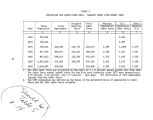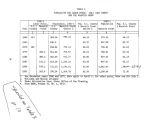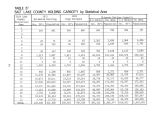| OCR Text |
Show The following are the assumptions on which the future projections of ( 4) size of the U. S. labor force are based ( see Table 4). 1. Population assumption- Series E-- assumes that fertility rates remain at the replacement level. 2. Labor force-- future Labor Force Participation Ratios are derived by extrapolating the trend for the period 1955- 1972 and tapering this trend so that in 50 years all changes are reduced to approximately zero. 3. Average annual hours ( paid)-- are assumed to decline by 0.5 percent a year in the agricultural sector; in the private non agricultural sector, hours are assumed to decline by 0.3 percent per year. 4. Productivity in the private non- farm economy-- assumed to grow at its long- term rate of 2.7 percent per year. The shortfall in productivity for the recent period, 1968- 72, compared to the long- run trend, will be made up by 1980. The annual trend rate of 5.5 percent for the farm sector is assumed to continue trhoughout the projection period. 5. Government-- all levels of government will expand efforts to meet a wide variety of domestic requirements but state and and local government activity will continue to grow relative to federal government activity. Also assumes that federal government, State and local budgets will be close to being in balance by 1980 and 1985. 6. Residential construction-- the estimates assume that the nation will meet its housing goals by 1978. From 1979, residential construction maintains a constant proportion of real GNP. 7. International trade-- despite the increased imports of oil, the U. S., by 1980, will have achieved a slight surplus in its net export balance. 15 |















































































